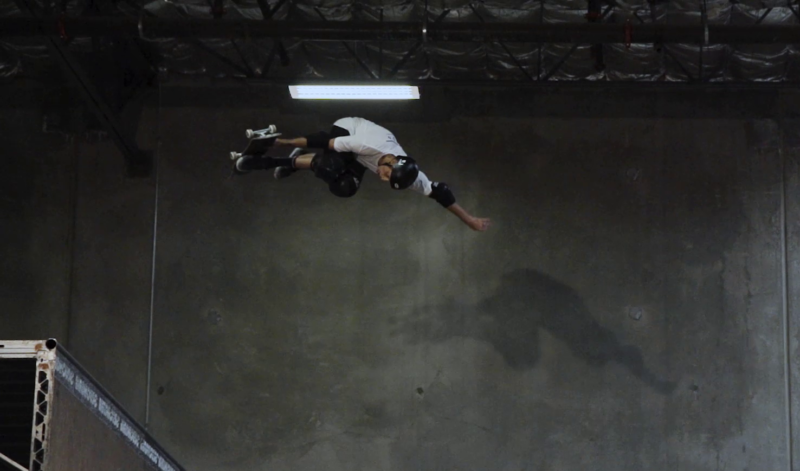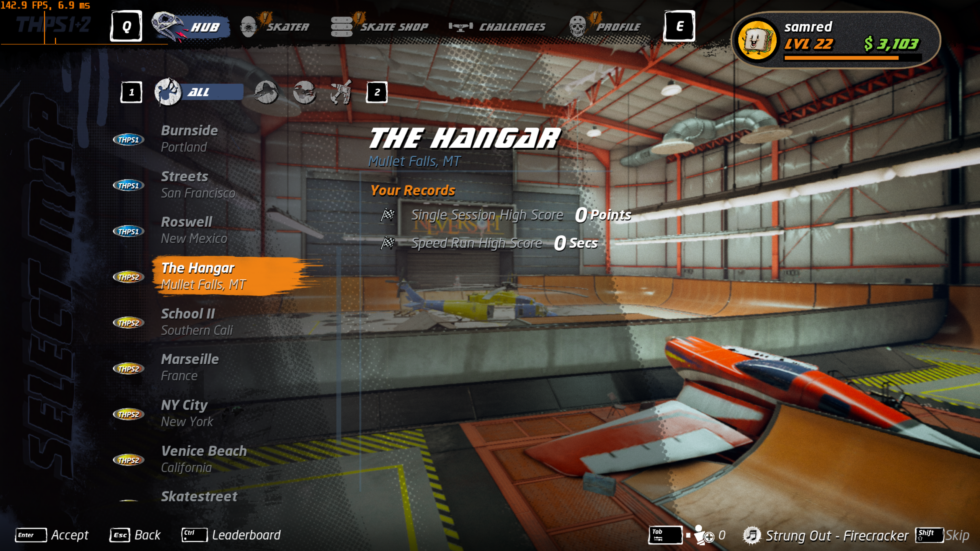
Before we begin putting arms around each other as a bunch of PlayStation skateboarding fans, screaming classic pop-punk songs and praising this week's new Tony Hawk's Pro Skater 1+2, let's remember the last time a nostalgic cash-in pretended to be a Superman.
Tony Hawk's Pro Skater HD launched in 2012 as a last gasp of the Xbox 360 and PS3 generation, but it was far from the return to skateboarding glory that fans had hoped for—especially as the series had been written off after watered-down sequels and peripheral add-ons. As a "compilation" of the first two mega-popular Tony Hawk games, THPSHD only included seven skateparks from both games combined. Its "HD" status may have technically been true, but glitchy physics, questionable color-mapping, and a broken "big drop" system made it far from definitive.
Eight years later, the series' handlers at Activision are back with another crack at the first two Tony Hawk games, once again at the cusp of a new console generation. In good news, this time, Tony Hawk's Pro Skater 1+2 is... good. Like, it's really good.
What to expect, how it feels
-
The THPS2 "Hangar" course, reimagined.
-
Yes, you can still grind on a helicopter's blades and open up a snowy outdoor space to skate around in.
-
The THPS1 "Warehouse" course.
-
You can arguably play this level over and over and over and get your money's worth.
-
One of the more dramatically lit remastered levels.
-
THPS1 "School" course.
-
Lots of shadowy portions as you look for tables and schoolbells to grind on.
-
"Downtown" from THPS1. Pre-session goals give you hints for what you need to complete.
-
"Venice" from THPS2. The sunset effect is handsome...
-
...but sometimes, I wish I could toggle the sun shining more directly from above.

Tony Hawk’s Pro Skater 1+2
Having spent the past day playing a lot of the remake's PC version, I can report that the rebuilt-from-scratch controls and physics are (mostly) on point—with every major difference hinging on a jump from the original game's refresh rate. What once natively ran at under 30fps can now run at an unlocked rate at arbitrary resolutions, and I've seriously enjoyed the results on my 144Hz monitor.
Mechanically, the multi-studio team that pieced Tony Hawk back together appears to have erred on the side of allegiance to the first two PlayStation games. How high you jump; how long you hover in mid-air while boosting up a half-pipe; how quickly your body rotates as you pull a trick; how long it takes tricks to animate: Set a stopwatch on the modern versions and their PS1 forebears, and they're pretty much 1:1. This differs slightly from the Xbox and Dreamcast versions of the first two games, which each added floatiness to most of the above metrics.If your brightest THPS memories come from the '90s, then you're likely to remember the game as played on a CRT panel, a screen technology that benefits from lower latency between button taps and on-screen action. This was the first thing I thought about when I struggled with trick timing while playing THPS1+2 anew: Is my monitor the bottleneck for my high scores and sick tricks? Does my screen suck, or is it just me? So I grabbed my Samsung Galaxy S9, toggled super slow-motion video, and got down to business.
Lapsed THPS players should expect short-lived frustrations.
On default monitor and GPU settings, my PC version of the game shows roughly 16 frames between a button tap (using an Xbox One gamepad, connected via 2.4GHz wireless adapter) and a significant in-game animation beginning (in my test's case, a mild bending of the knees before pulling an "ollie" hop on a skateboard). On a 144Hz monitor, those 16 frames equate to roughly 0.11 seconds. Depending on your GPU manufacturer, however, you can toggle different types of "low latency" modes. In my case, I went into an Nvidia Control Panel, switched "low latency" mode to "on" (not "ultra") and tried again. This cut the tap-to-animation time in half, from 16 frames to 8 frames (down to 0.05 seconds). After making this switch, I did indeed start doing better. (Again, this is just the animation before your skater actually hops. Milliseconds matter.)
Without a copy of the game on either PS4 or Xbox One to compare, I'll merely estimate that those systems' input latency counts, as connected to standard HDTVs and running at 60fps, are floatier than a high-end PC connected to a high refresh-rate monitor. Mostly, I've had to come to terms with how the series' classic controls and timings feel different when your character's animations run that much more smoothly, and your mileage will quite honestly hinge on how that switch strikes you. (Lapsed THPS players should expect short-lived frustrations getting used to it.)
More on mechanics, achievements
-
Let's start this menu-dive gallery with a look at the create-a-skater interface. One of the facial options feels very, very 2020.
-
The game's new achievement system rewards players with in-game cash and experience points.
-
You'll need both experience levels and in-game cash to unlock some of the fancier cosmetics, like a series of skateboard graphics that animate.
-
The create-a-park system gates some of its wackier decoration options behind in-game cash and experience levels, as well.
-
The menu option many of you will be most interested in: the playlist. Most, but not all, of the first two games' songs have returned.
-
PC video options, part one.
-
PC video options, part two.
-
Some in-game options, including HUD tweaks.
-
Want to remove some of the QoL tweaks and have the game better resemble either THPS1 or THPS2? That's an option.
If that seems like overkill, you've clearly never tried racking up precise, multi-part skate-trick combos in a classic Tony Hawk game before. In great news, at least, this week's remake accounts for the realities of modern screens with a mild change to the scoring system. Should you miss your trick's landing angle, the window for landing has been widened, only with a score penalty for "sloppy" landings (or enjoy a score bonus for a "perfect" landing). However, that tweak doesn't apply to trick animations that bleed from, say, a mid-air kickflip to a rail grind. (These in particular have been kicking my butt.)
With all of that in mind, the controls can best be described as "Tony Hawk 2-Plus." Every trick chain can be extended with "manuals" (pop a skateboard "wheelie" while keeping your feet balanced) and "reverts" (land from a half-pipe with a slick rotation), while the biggest mechanic lifted from a later sequel is the wall plant, which lets you bounce off a wall with your foot instead of having a trick chain end with a wall collision. Otherwise, the mechanical system is mostly old school. Speed is managed with the same "special" meter from the first two games, while the "big drop" mechanic has been removed, so you can survive crazy falls so long as your skateboard lines up with the ground.
Should you wish to jump into your favorite old level and skate around to your heart's content, every standard course is unlocked immediately for this purpose. (Meaning, THPS1+2 passes Ars Technica's metric for game remakes.) The "classic" campaign is mostly a 1:1 retread of the original two games' collect-a-thon goals on each course, though the old games' "cash" pickups have been turned into a simpler "upgrade point" currency. For the most part, you can watch a classic PS1 walkthrough to find all of this game's best techniques and collectible guides.
Behind this is a comprehensive new "achievements" system, which is easily the game's best under-the-hood update. Start with simple goals like building your first create-a-park course or pulling off a specific trick with a famous skateboarder (like Tony Hawk's 900). From there, graduate to crazier goals like chaining together specific tricks in a combo. This entirely optional system lets you accrue in-game cash to buy outfits, accessories, and skateboards for your characters, with no apparent real-money system as of launch. Activision has a history of sneaking real purchases into games after launch, but in recent years, they've relented on this practice, so we're hopeful Tony Hawk fans can put their credit cards away after buying the danged game.
Graphics, online, other odds-and-ends

I've grown to appreciate the wash of paint applied to these classic skateparks, though I do wish they'd come with more dynamic lighting options. Each skatepark is bathed in handsome lighting effects, all optimized for realistic levels of contrast and shadow depending on whatever time of day has been locked in stone. The trouble is, this covers some classic levels' stretches in noticeable shadows, and this has toyed with my muscle memory of what I'm looking for as I pilot a chain of tricks.
That's more of a nitpick for anyone who remembers, say, the Venice beachside skatepark as a bright, evenly lit zone of hops, grinds, and strategically arranged "VB gap" half-pipes. I'd personally like to see some of these handsomely reimagined parks light up with different time-of-day effects, but the developers chose pre-baked lighting effects to keep things running at a high frame rate. (Fair trade.) Every newly rendered course is otherwise clear and readable in terms of navigation and trick execution, so you shouldn't worry about handing this to a brand-new Tony Hawk player in your family.
Due to their allegiance to older console limitations, THPS1+2's courses start to feel a bit claustrophobic after a few hours of play. Really, the number of twisting paths, hidden rooms, and spacious plazas in each course is a reminder of how much Neversoft squeezed out of PS1 hardware in the late '90s, and you'll have plenty of fun tearing through these smartly arranged courses in 2020. (Plus, later Tony Hawk games suffered specifically because of oversized, bloated courses.) But a little part of me wishes this year's dev team had found clever ways to sew one skatepark into the next, so that you could seamlessly smash through a window in the THPS1 warehouse and land in the THPS2 bullring. Alas.
Because this is an impressions take, I can only report that the online multiplayer modes function mostly as advertised, as opposed to offering a deep dive. Various classic game modes, which range from score attacks to quirky modes like "graffiti," rotate in public online matchmaking lobbies against up to seven other players, and in these, players can't collide with each other, so at least they're not ruined by griefers (though I've already seen online players rack up seemingly impossible scores, without any sense of whether they're great players or great hackers). Weirdly, while friends can set up local split-screen modes on the same couch, even on PC (and thank goodness), they cannot create custom online lobbies for friends-only skate challenges. I currently cannot invite friends over to my home (hi, pandemic), and I'd really like to share this classic gaming goodness with friends, not silent strangers, Activision.
The rest of the experience is easy to summarize: The create-a-park mode is full of cool options, along with easy ways to upload and share your creations (and download freebies made by lead studio Vicarious Visions); nearly every licensed rock, pop-punk, and hip-hop song returns from the first two games, along with fitting new ones, for a grand total of 60 tracks; and you can pick from every real-world skateboarder from the first games, along with up-and-coming skaters and four create-a-skater slots.
Verdict: Activision didn't screw this up. If you're fiending for a return to old-school, lean-and-mean Tony Hawk's Pro Skater, buy.
Technology - Latest - Google News
September 05, 2020 at 06:00AM
https://ift.tt/3bqrTvy
Tony Hawk's Pro Skater 1+2 PC impressions: No pretending for this Superman - Ars Technica
Technology - Latest - Google News
https://ift.tt/2AaD5dD
Bagikan Berita Ini














0 Response to "Tony Hawk's Pro Skater 1+2 PC impressions: No pretending for this Superman - Ars Technica"
Post a Comment